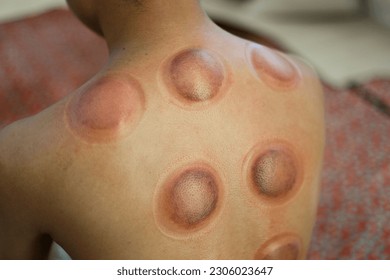In recent years, many people have sought alternative methods for pain relief, and one ancient practice gaining popularity is hijama therapy. Hijama, also known as cupping therapy, involves creating a vacuum effect on the skin to promote healing and alleviate various ailments. This holistic approach to pain management has roots in traditional medicine and offers a natural option for those seeking relief from chronic pain conditions.
Understanding Hijama Therapy
Hijama in Dubai is an ancient practice with origins in traditional Islamic medicine, though similar techniques have been used across various cultures. It involves placing cups on the skin, creating suction through heat or mechanical means. The suction draws the skin and underlying tissues into the cup, promoting blood flow, enhancing circulation, and encouraging the body's natural healing processes. This technique is believed to stimulate the release of toxins, reduce inflammation, and relieve pain.
During a hijama session, the practitioner typically applies oil to the skin to facilitate the cup's movement. After creating the vacuum, the cups are left in place for a short duration, allowing the body to absorb the benefits of the treatment. The process may involve using different cup sizes and techniques, depending on the individual's condition and needs.
Benefits of Hijama Therapy for Pain Relief
1. Relief from Chronic Pain
One of the most significant benefits of hijama therapy is its ability to provide relief from chronic pain conditions. Many individuals suffering from conditions like arthritis, fibromyalgia, or lower back pain have reported a noticeable reduction in pain levels after undergoing hijama therapy. The increased blood flow to the affected areas helps reduce inflammation and promotes faster healing.
2. Stress Reduction and Relaxation
Chronic pain is often exacerbated by stress and tension in the body. Hijama therapy not only targets the physical symptoms of pain but also addresses the mental and emotional aspects. The relaxation induced by the therapy can help reduce stress levels, leading to an overall sense of well-being. Many people find the experience calming, which can further enhance pain relief.
3. Improved Blood Circulation
The suction created during hijama therapy improves blood circulation in the treated areas. Enhanced circulation allows oxygen and essential nutrients to reach the tissues more efficiently, facilitating healing. This increased blood flow can also help flush out toxins and metabolic waste that may contribute to pain and discomfort.
4. Reduction of Muscle Tension
Hijama therapy can effectively reduce muscle tension and stiffness. The suction from the cups helps release tight muscles, promoting relaxation and flexibility. This is particularly beneficial for athletes or individuals who engage in physical activities that may lead to muscle strain or tension.
5. Holistic Approach to Health
Unlike conventional pain management methods that often rely on medication, hijama therapy takes a holistic approach to health. It addresses the root causes of pain rather than merely masking symptoms. This perspective aligns with the philosophy of treating the whole person, considering physical, emotional, and spiritual well-being.
Conditions Treated with Hijama Therapy
Hijama therapy can be beneficial for various conditions, including:
- Migraines and Headaches: Many individuals have found relief from chronic headaches and migraines through hijama therapy.
- Joint Pain: Conditions like arthritis and other joint-related issues often respond well to cupping therapy.
- Muscle Pain and Strains: Athletes and active individuals can benefit from hijama therapy to relieve muscle tension and pain from overexertion.
- Back Pain: Lower back pain is a common issue that can be effectively treated with hijama therapy.
- Stress and Anxiety: The relaxation effects of hijama can help alleviate symptoms of stress and anxiety.
Safety and Considerations
Hijama therapy is generally considered safe for most individuals. However, it's essential to consult with a qualified practitioner who has experience in this technique. Certain conditions may require caution, such as bleeding disorders or skin infections. It's crucial to disclose any medical history and ongoing treatments to ensure hijama therapy is suitable for you.
Conclusion
Natural pain relief through hijama therapy offers a holistic alternative for individuals seeking to manage chronic pain and improve their overall well-being. With its ability to enhance blood circulation, reduce muscle tension, and promote relaxation, hijama therapy has gained recognition as a valuable tool in pain management. As more people turn to natural remedies, this ancient practice continues to provide hope and healing for those in need of relief.
If you are considering hijama therapy, it's advisable to consult with a healthcare professional or qualified practitioner to explore how this therapy can fit into your pain management plan. Embracing natural methods like hijama may lead you toward a healthier, more balanced life free from the constraints of chronic pain.





Comments